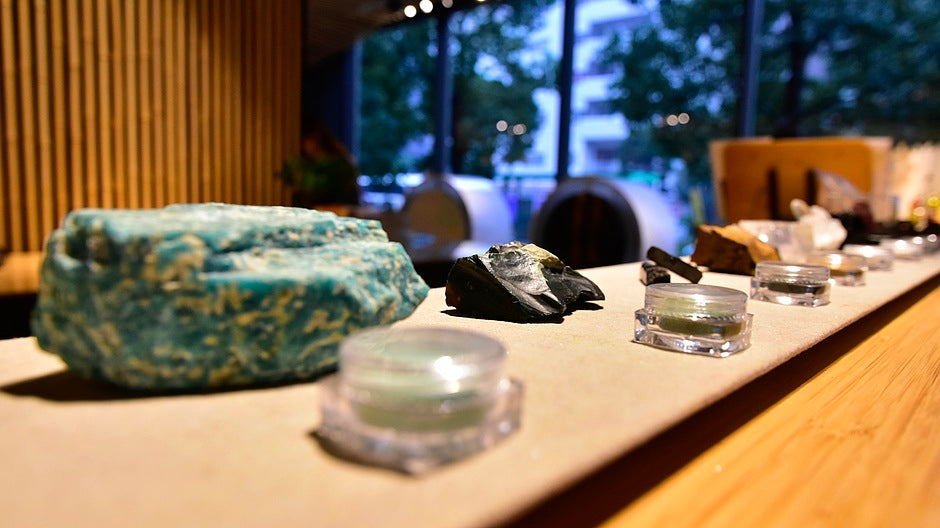Although there are more than 4500 colors of pigment in our store, few people know the breakdown of the Pigments.
As we already introduced in the previous article "Introduction-The types and features of 4500 colors in PIGMENT TOKYO- vol.1", we have a variety of pigments in our store.
https://pigment.tokyo/en/blogs/article/1
It is no exaggeration to say that we have the largest number of mineral pigments, including natural and Shin-Iwa (artificial) in Japan. In the previous article, we asked about the natural Gunjyo and Rokusho, so this time, let's ask about Shin-Iwa (artificial) pigment.
-We asked you about the pigments made of natural ores in the previous article. Aside from that, there are many types of mineral pigments in PIGMENT TOKYO. Are they all made from the natural ores?
Before Meiji period, there were only a few colors such as Gunjyo or Rokusho. After
the opening to the country by the Meiji government and entered the Showa period, a number of mineral pigments increased explosively.
-What kind of pigments were increased?
First, various mineral pigment from nature based on the stones imported from oversea was developed. Some people think "Because the mineral pigments are made from nature, the colors are all traditional." However, it is not true because even now, new natural mineral pigments are still in development.

-I see, what else do you have?
Next let's talk about Shin-Iwa pigment. Shin (New)-Iwa (stone) is literally made of grinded stone. Actually, these are made from the artificial stones.
-Artificial Stone? Would it be possible?
Yes, first we bake glaze used in pottery and lead glass to make artificial stone. Shin-Iwa is produced by grinding these ingredients in the same process as making mineral pigments.

-I see, but why did they use glaze for pottery?
Do you know the Otsuka Museum of Art in Tokushima prefecture?
In this museum, they exhibit duplicated paintings in which they used the firing technique of pottery to make it last for a long time rather than original paintings.
The light resistance of the glaze for pottery is excellent, which is the reason why we use it.
Then, the manufacture of mineral pigments produced their original mineral pigments by applying the method of glaze. Since these are made of the glaze, the range of the colors has increased compared to the natural. It enables us to express the color such as light green, purple, light blue, and yellow which natural ore could not make.

-There are many colors in Shin-Iwa pigment.
I assume that the more opportunity that Japanese people saw the oil painting as the country opened after the Meiji period, the more Shin-iwa pigment has developed.
-What is the difference between Natural Mineral pigment and Shin-Iwa pigment in terms of the expression?
As I have explained earlier, Shin-Iwa pigment has matted finish compared with naturals since it's made of glaze.
On the other hand, natural pigments use the ores that reflect or permeate through light.
Therefore, saturation is completely different even the name and the size of the particle are the same. I recommend artists to choose the mineral pigments based on their ideal expression without being captivated by the words, Natural or Artificial.


